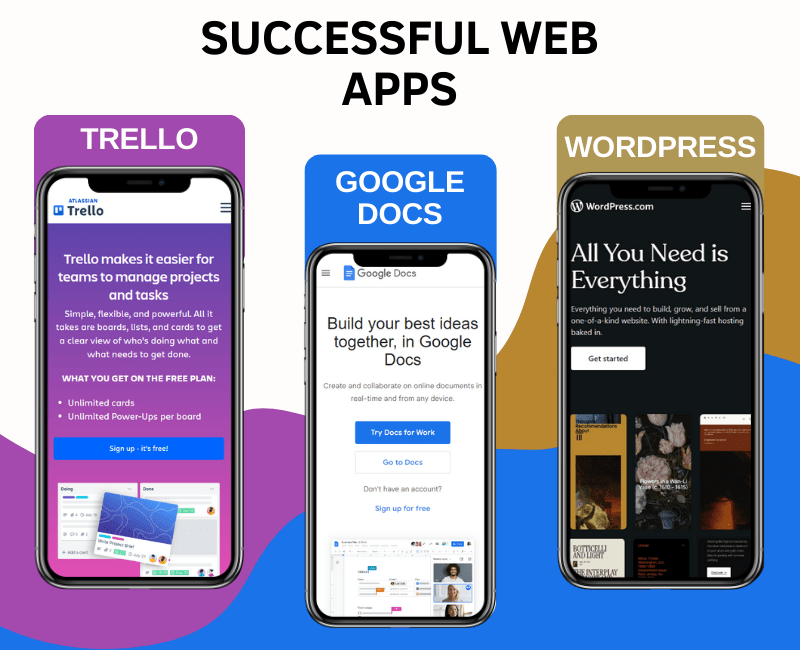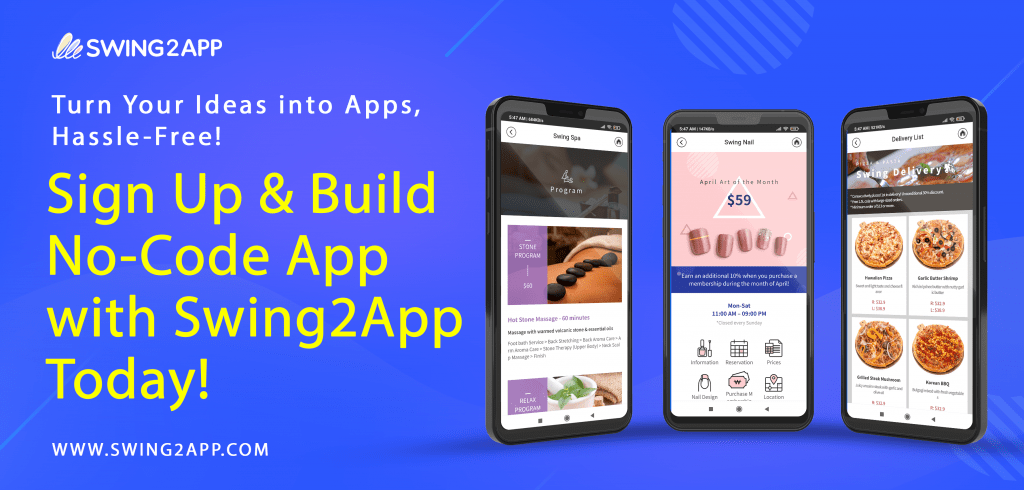In the fast-paced arena of mobile app development, two strong app development options emerge: web apps and native apps. When creating captivating digital experiences, it’s essential to grasp the advantages of web apps and native apps as well. Welcome to our blog and learn everything about the web app vs. native app landscape, where we’ll delve into the realms of web app development and cross-platform app development.
Web apps are the versatile single solution for all the problems of the tech world, as they are accessible across various platforms and the benefits they offer users and developers alike. On the other hand, native apps have their own unique advantages like seamless app performance and customized user experiences.
In this blog, we’ll take you on the journey of the ever-evolving world of app development, comparing the strengths of web apps to the advantages that native apps provide. By the journey’s end, you’ll possess a clear roadmap to help you chart the best course for your digital ambitions. So, let’s set sail on this enlightening adventure into the realm of web and native apps.
THE STRENGTHS OF NATIVE APPS
In the dynamic world of mobile applications, native apps stand tall with a host of unique benefits. Let’s delve into the remarkable strengths that make native apps a formidable force in the app development arena.
Superior Performance and Speed:
Native apps are like finely tuned sports cars on the digital highway. They are crafted to harness the full potential of the device they run on, offering unmatched performance and speed. The smooth and responsive user experience is a hallmark of native apps, making them ideal for resource-intensive tasks like gaming, video streaming, and real-time interactions.
Access to Device Features:
Native apps enjoy exclusive access to a device’s hardware and software features. This means they can tap into the device’s camera, GPS, microphone, and more, offering a plethora of possibilities. For instance, fitness apps can utilize GPS for accurate tracking, while social media apps can employ the camera for instant photo sharing.
Enhanced User Experience:
Native apps are synonymous with exceptional user experiences. They seamlessly integrate with the device’s operating system, adhering to its design guidelines and providing a familiar interface. This attention to detail ensures that users feel at home while navigating native apps, resulting in higher user satisfaction and engagement.
Offline Functionality:
Native apps are not dependent on a constant internet connection. They can function offline or in areas with limited connectivity, which is crucial for apps that require access to content or data regardless of network availability. Think of e-readers, travel guides, or productivity tools – native apps shine in these scenarios.
App Store Visibility:
Native apps have the privilege of residing in prominent app stores like the Apple App Store and Google Play Store. This offers unparalleled visibility to potential users. App stores provide a centralized platform for discovery, downloads, and updates, significantly boosting an app’s reach and credibility.
Exemplary Industry Performers:
Native apps have found their niche in several industries and app categories, showcasing their prowess. For instance, gaming apps harness native capabilities for immersive gameplay and graphics. Finance apps ensure robust security and seamless transactions. E-commerce apps offer rich, interactive shopping experiences. These are just a few examples of where native apps shine.
Native apps are the go-to choice when peak performance, device integration, and superior user experiences are non-negotiable. Their ability to harness the full potential of a device, coupled with app store visibility, makes them a force to be reckoned with in the ever-evolving world of mobile applications. Whether you’re a gaming enthusiast, a business professional, or an avid traveler, native apps have something exceptional to offer in various industry verticals and app categories.
THE RISE OF WEB APPS
In the ever-evolving landscape of mobile applications, web apps have carved out a significant presence, and understanding their emergence and growing popularity is paramount. Let’s embark on a journey to unravel the factors that make web apps a compelling choice in the realm of digital solutions.
The Genesis of Web Apps:
The inception of web apps can be traced back to the quest for enhanced accessibility and user convenience. Unlike the native apps, which are installed directly on a device, web apps are accessible via web browsers, offering a versatile and lightweight alternative. This shift in approach stems from the need to cater to diverse platforms and audiences.
Web Apps in the Spotlight:
Web apps come into the limelight under several scenarios where their advantages shine brightly.
Cost-effectiveness:
Creating and maintaining web apps is often more cost-effective than developing multiple native apps for different platforms. A single codebase can serve a wide array of devices and operating systems, significantly reducing expenditure.
Cross-platform Compatibility:
The cross-platform capability of web apps is a game-changer. They are platform-agnostic, rendering seamlessly on various devices, be it smartphones, tablets, or desktops. This flexibility ensures that your app reaches a broader audience without the complexities of platform-specific development.
Easier Updates and Maintenance:
Keeping web apps up-to-date is a breeze. A single update to the web server instantly propagates changes to all users, eliminating the need for individual app updates. This agility ensures that your users always enjoy the latest features and bug fixes.
Reduced Development Time:
Building a web app is a streamlined process. Developers can leverage existing web technologies and frameworks, reducing development time significantly. Rapid prototyping and deployment become feasible, translating into quicker time-to-market.
Wider Reach:
Web apps are the epitome of inclusivity. They are not confined to app stores; instead, users can access them directly through web browsers. This broader accessibility opens doors to a more extensive user base, eliminating the need for app store approvals.
Embracing the Web App Revolution:
The rise of web apps is a testament to their adaptability and efficiency. They present a compelling case in scenarios where cost-effectiveness, cross-platform compatibility, easy maintenance, reduced development time, and a broader reach are pivotal. Whether you’re an entrepreneur, a business owner, or a developer, recognizing the potential of web apps is pivotal in harnessing the full spectrum of digital possibilities. As we delve deeper into the realm of web app development, we’ll unearth more about their capabilities and how they shape the future of the mobile app landscape.
A CLOSER LOOK: WEB APP VS. NATIVE APP
In the dynamic world of mobile applications, web apps and native apps stand as two prominent contenders. To make an informed choice for your digital endeavor, it’s crucial to explore the key differences between these two approaches. Join us on this comprehensive journey as we dissect the distinctions in user experience, development considerations, performance, distribution channels, and security.
User Experience:
When it comes to user experience, native apps have the upper hand. They are tailor-made for specific platforms, leveraging native functionalities and hardware, resulting in a smooth and responsive user interface. Web apps, while accessible across platforms, may lack the finesse of their native apps, often leading to slightly inferior user experiences.
Development Considerations:
Developing a native app requires platform-specific expertise, as they are crafted for a single operating system, be it iOS or Android. On the flip side, web apps offer versatility with their cross-platform compatibility. Developers can utilize standard web technologies, reducing development complexities.
Performance Variations:
Native apps typically outshine web apps in terms of performance. They harness the full potential of a device’s capabilities, offering speed and responsiveness that web-based counterparts may struggle to match. For graphics-intensive or resource-hungry applications, native app development is often the preferred choice.
Distribution Channels:
Distribution channels play a pivotal role in app accessibility. Native apps are distributed through platform-specific app stores (e.g., Apple App Store, Google Play Store), which can provide a significant visibility boost. On the other hand, web apps are accessible via web browsers, eliminating the need for app store approvals and offering a broader reach.
Security and Privacy:
Security and privacy considerations vary between web apps and native apps. Native apps tend to have stringent security measures due to their inclusion in app stores. Web apps, while secure, may face certain vulnerabilities, and their privacy policies are typically governed by the web platform they run on.
Real-world Examples of Web apps vs native apps:
To illustrate these differences, let’s explore a few real-world scenarios. Consider a gaming app. Developing it natively allows for harnessing the full potential of a device’s GPU, delivering a seamless gaming experience. In contrast, a news aggregator app could opt for a web-based approach, ensuring broad accessibility without the need for multiple app versions.
In the web app vs. native app debate, each approach has its strengths and weaknesses. Native apps excel in user experience and performance, making them ideal for resource-intensive applications. Web apps shine in versatility and cross-platform compatibility, offering cost-effective solutions. Your choice should align with your project’s objectives and target audience. As we navigate this intricate landscape, we gain insights into the unique advantages and considerations of both approaches, aiding us in making informed decisions in the realm of mobile application development.
WHEN TO CHOOSE A WEB APP?
In the ever-evolving world of app development, making the right choice between a web app and a native app can significantly impact your project’s success. To steer you in the right direction, let’s delve into specific scenarios, industries, and app categories where choosing a web app is the smarter and more strategic move.
1. Budget-Friendly Solutions:
When resources are limited, and you’re working on a tight budget, web app development is often the more economical option. These projects typically require fewer specialized skills and can be built using standard web technologies, reducing development costs. For startups and small businesses looking to establish their digital presence without breaking the bank, web apps offer a cost-effective avenue.
2. Cross-Platform Compatibility:
The demand for cross-platform compatibility is on the rise, driven by the need to reach a broader audience. Web apps, by their nature, excel in this domain. They run seamlessly on various web browsers, making them ideal for projects targeting diverse platforms simultaneously. E-commerce platforms, content delivery systems, and business tools often opt for web apps to maximize their reach.
3. Rapid Deployment and Updates:
In fast-paced industries where time-to-market is critical, web apps hold a distinct advantage. They can be developed, deployed, and updated more swiftly than the native apps. Consider news portals or event management systems that require real-time updates. Web apps can adapt and evolve quickly to meet the demands of ever-changing content.
4. Simplified Maintenance:
Maintenance is a continuous aspect of app development. Web apps streamline this process by allowing central updates that instantly reflect across all platforms. This feature is particularly advantageous for businesses dealing with content-driven platforms, educational institutions, or corporate intranets.
5. Broad Accessibility:
When your goal is to reach the widest possible audience, web apps shine. Users don’t need to download and install them from app stores, reducing friction. Think of online learning platforms, forums, or social networks where accessibility and user engagement play pivotal roles.
Successful Web App Examples:
To reinforce these considerations, let’s explore examples of successful web apps:

LinkedIn: The professional networking giant leverages web technology to provide users with a seamless experience on various platforms.
Trello: A widely-used project management tool that operates smoothly across web browsers, catering to users worldwide.
Google Docs: This cloud-based collaboration suite demonstrates the power of web apps in enabling real-time document editing and sharing.
WordPress: The popular content management system empowers countless websites, showcasing the potential of web-based platforms for content creation and management.
Choosing between a web app and a native app is not a one-size-fits-all decision. It hinges on your project’s objectives, budget, target audience, and industry. By recognizing scenarios where web apps offer a competitive edge, you can make informed choices that align with your goals. In these scenarios, web apps emerge as versatile, accessible, and cost-effective solutions, enabling you to navigate the dynamic landscape of app development with confidence.
CONCLUSION
In the ever-evolving landscape of app development, the choice between web apps and native apps is not a one-size-fits-all decision. It hinges on a multitude of factors, ranging from your project’s objectives and budget to your target audience and industry. As we’ve explored the strengths of each approach, it’s evident that both have their time and place in the digital realm.
Web apps shine when cost-effectiveness, cross-platform compatibility, rapid deployment, streamlined maintenance, and broad accessibility are paramount. They empower businesses to reach a diverse audience swiftly and economically. In contrast, native apps excel in delivering superior performance, leveraging device features, enhancing user experiences, ensuring offline functionality, and capitalizing on app store visibility.
Ultimately, the choice between web and native apps should be driven by your unique circumstances and objectives. There’s no one “right” answer. So, whether you’re building a project from scratch or considering an update to an existing app, take the time to assess your needs, weigh the advantages of each approach, and make an informed decision. By doing so, you’ll navigate the complex app development landscape with confidence and clarity, ensuring your project’s success in the digital age.

